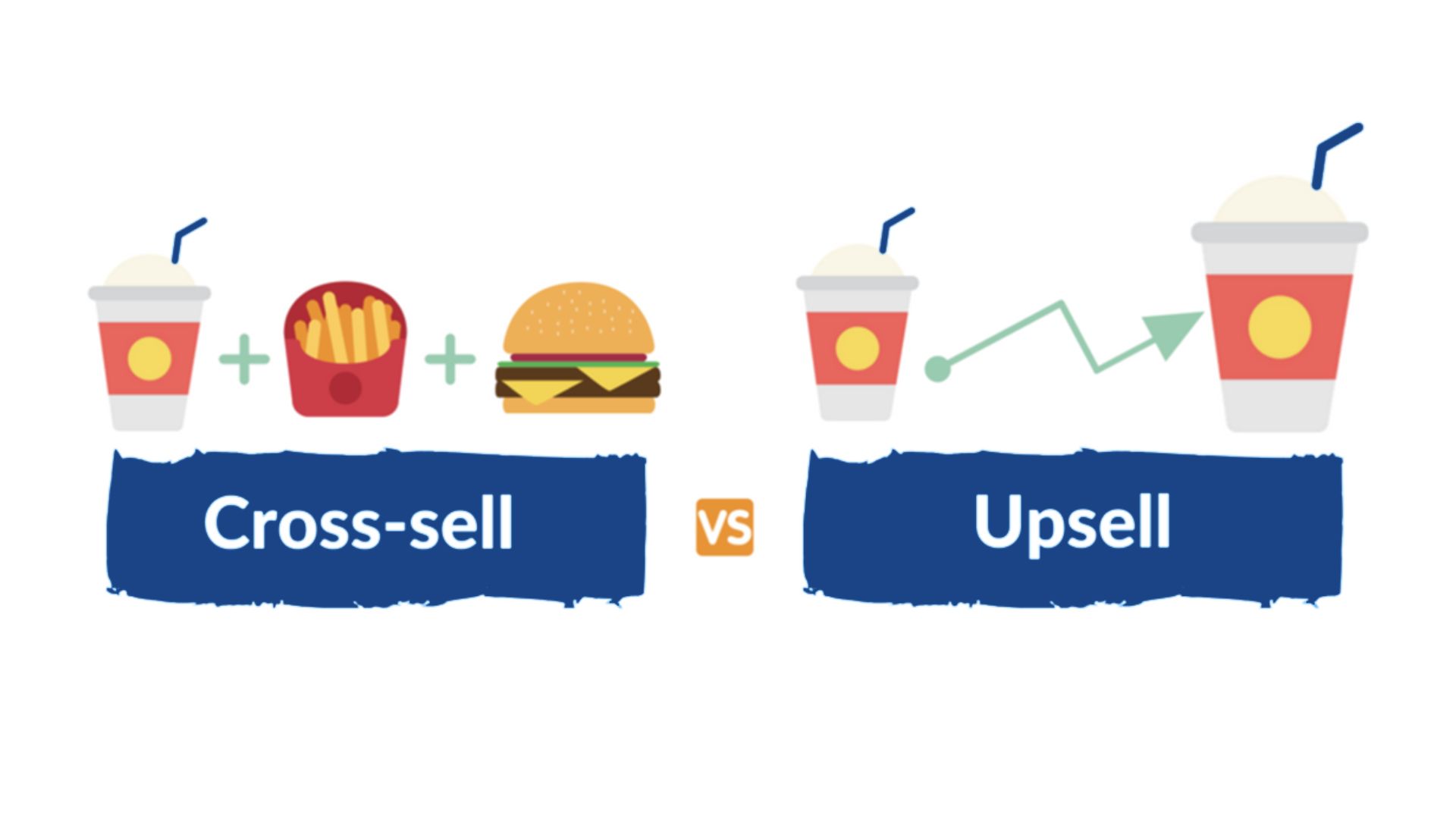What is Cross-selling? Mastering Cross-selling in 2023

What is cross-selling? What is the difference between Upselling and Cross-selling? Tips to grasp to master cross-selling in 2023.
1. What is cross-selling?
Cross-selling is selling related or complementary products or services to customers based on the company’s interests and purchases. Cross-selling is one of the most effective marketing methods.
2. Difference between Cross-selling and Upselling
Upselling is an activity that encourages customers to purchase products that are equivalent or superior to multi-products, while Upselling invites customers to buy related or complementary items. Although often used interchangeably, the two offer distinct benefits and can be effective side-by-side. So what is the difference between Upselling and Cross-selling?
Upselling
Upsell often uses comparison charts to market higher-end products to customers. Showing visitors that other versions or models can better meet their needs can increase AOV and help users be more satisfied with their purchase. Companies that excel at upselling are effective at assisting customers to visualize the value they will receive when ordering a higher-priced item.
Cross-selling
Cross-selling identifies products that fulfill additional, complementary needs that the original item did not meet. For example, a comb can be cross-selling to a customer buying a hair dryer.
Cross-selling is common in all types of commerce, including banks and insurance agents. Credit cards are cross-sold to people who sign up for savings accounts, while life insurance is often recommended for customers buying car insurance.
In e-commerce, cross-selling is commonly used on product pages, during checkout, and in lifecycle campaigns. It’s a highly effective tactic to generate repeat purchases, demonstrating the breadth of a category to customers. Cross-selling can alert users to products they previously didn’t know you offered, giving them even more confidence as the best retailer to fulfill a particular need.

3. Pros and cons of Cross-selling
What are the strengths of cross-selling?
Key strengths of cross-selling include
- increasing sales revenue,
- improving customer satisfaction and in B2B businesses,
- increasing Customer Lifetime Value (CLV) through deeper integration into the customer’s business.
Customers buy from brands they trust and have had positive experiences. As a result, it becomes easier to sell to existing customers than new ones.
- Cross-selling can increase potential sales, especially on less popular items.
- Cross-selling can increase brand loyalty as customers have more exposure to a company’s range of products.
- Cross-selling Can satisfy all customer needs, preventing them from approaching competitors to meet other requirements.
Limitations of cross-selling
Cross-selling can be frustrating for customers and ineffective in generating sales. This is almost always due to a need for proper planning or data. If you introduce a nonsensical product—like a winter clothing ad to a customer who bought a bathing suit—you can drive that customer away. If you reach a customer over the phone, who often places orders via email, you may be unable to get them.
Cross-selling isn’t always a great idea. According to a Harvard Business Review study published in 2012, certain problems with customers can make product-bundling a losing strategy. According to Denish Shah and V. Kumar, certain types of customers can be stressful for your customer service staff, whether by returning or canceling large quantities of goods and services or withholding spending in other areas to spend on your cross-selling promotions.
4. Steps of cross-selling for customers
Before you can convince your customers to embrace cross-selling efforts, you need to determine what products and services go together: What customers typically buy as an add-on to their purchase? What products are often purchased together? Or even which products have been successful in past cross-selling campaigns? Solid data makes all the difference.
- Identify relevant products and services suitable for cross-selling
- Identify the right customers ready for cross-selling
- Develop cross-selling campaigns and customer journeys
5. Some cross-selling tips for 2023
How can I increase my cross-selling effectiveness?

There are several strategies you can use for effective cross-selling. Consider using an email drip campaign to showcase additional products and services periodically. Wait until you have developed a relationship and have proven successful with the client. Ensure your products and services align with your customers’ needs and goals. Offering something that serves no purpose is counterproductive and can reduce customer satisfaction.
What are the dos and don’ts of cross-selling?
When cross-selling, consider your loyal customers who are more likely to repurchase. Build campaigns focusing on happy customers and promoting complementary products to them—train associates to recognize satisfied customers and assess their needs.
On the other hand, don’t assume customers know about your other services. “Educate” them and help them understand how those products can add value. Finally, avoid unhappy customers, which can further split their relationship with the brand.
Provide related items for your hot-selling products
Find top or great-value items and pair them with directly associated products. These include things your customers need to enhance the features they are looking for in your main product. Once you have your lists, you can decide how to place them.
When planning cross-selling product placements:
- Feature low-priced products and smaller accessories that cost 10% of the main product at the checkout page.
- Expensive items and more extensive accessories that cost 15%–50% of the main item will sell better if displayed on the product page.
- Exploiting impulsive shopping behavior of shoppers. For example, offer related products easily overlooked: earphones for cell phones, belts for pants, etc.
- Use phrases like “Customers also bought,” “Buy style,” “You might also like,” or “Popular related products” to encourage shoppers to make a purchase.
A limited number of product recommendations
Limiting the total number of options you try to cross-sell is a sensible approach, especially for small businesses. Business owners sometimes need to remember to hold back and display a list of additional products that customers can purchase. When this happens, shoppers can become so overwhelmed with side offers that they abandon their carts altogether.
The ideal number of cross-sell offers on a page is three. This provides enough window into the checkout phase to increase your customer attention span and conversion rate.
Manually select your offers so they include products that really resonate with customers without focusing on the products in their cart.
Conclusion
Through the above article, we have understood what Cross-selling is. If done well, cross-selling is a sales tactic that can increase a company’s profits and customer loyalty.
Doing badly can erode profits, create unhappy customers, and damage a company’s reputation. Regardless of how you upsell, it can be an effective tool to increase sales and address unmet customer needs.


